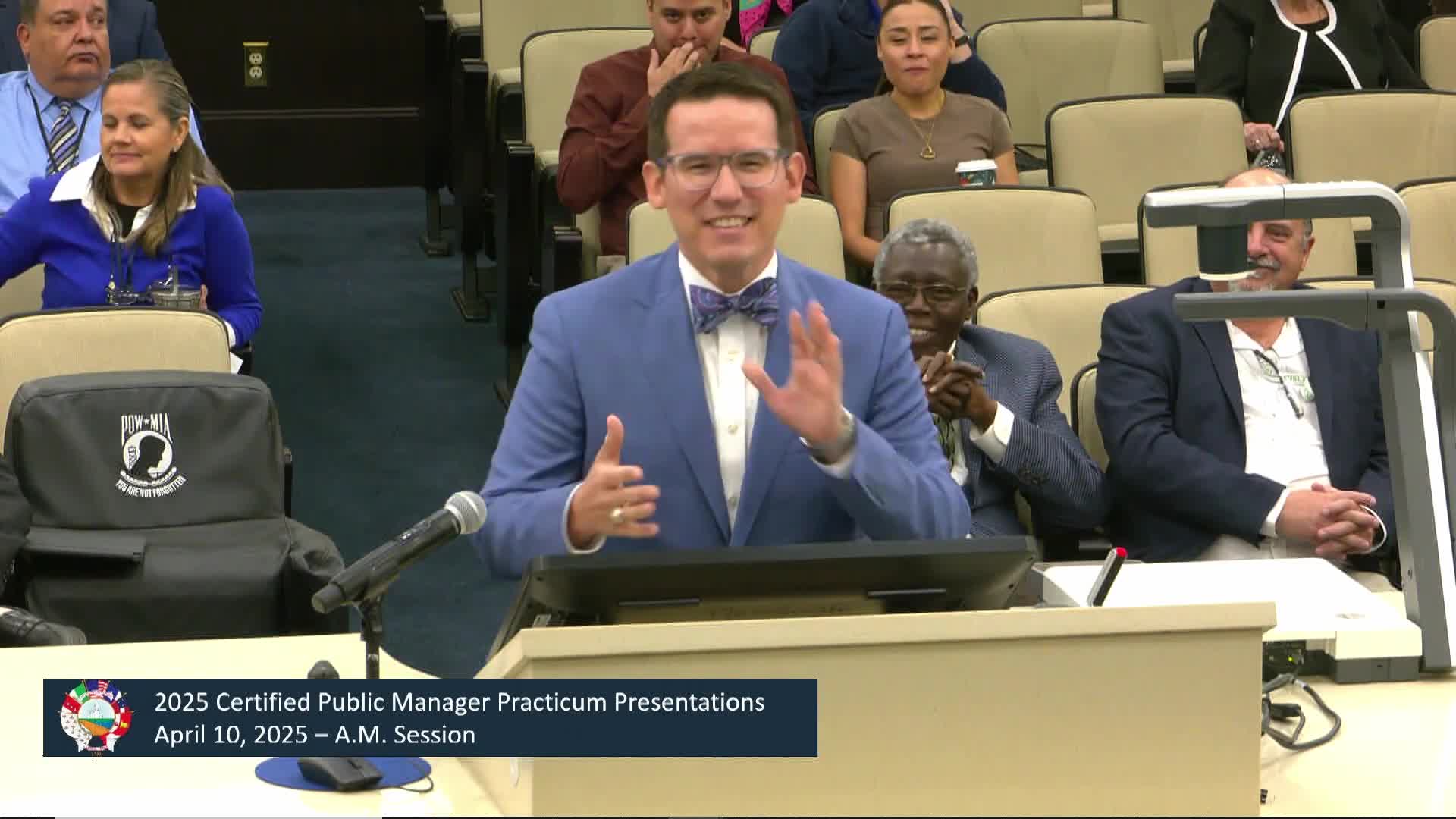Practitioner recommends collaborative approach to city collective bargaining; survey finds trust and transparency gaps
September 27, 2025 | Laredo, Webb County, Texas
This article was created by AI summarizing key points discussed. AI makes mistakes, so for full details and context, please refer to the video of the full meeting. Please report any errors so we can fix them. Report an error »

A CPM practicum presented by a city staff member identified trust, transparency and negotiator preparedness as the principal obstacles to reaching durable collective bargaining agreements between the city and civil service bargaining units.
The presenter (identified in public remarks as "Mister Rodriguez") said the project began after he joined the city and observed collective bargaining practices at the fire department. He described the prevailing bargaining model as adversarial and argued for a collaborative approach tailored to public-sector constraints in Texas, where public-sector employees do not have a statutory right to strike.
"A 100% of all respondents strongly agreed that trust between parties had a significant impact," the presenter reported, summarizing survey results from bargaining participants. The pracitcum's targeted survey and follow-up open-ended responses showed 43% of respondents agreed negotiations were fair, 71% agreed collaborative approaches yield more sustainable agreements, but 57% felt unprepared for negotiations and 85% disagreed or were neutral about openness and transparency of communication.
Based on the findings, the presenter recommended developing ground rules and shared goals for negotiations, scheduling trust-building workshops or retreats (potentially with a mediator), improving negotiator preparation and training, creating structured communication channels and considering a neutral third-party facilitator for difficult talks. He said the recommendations are intended to improve outcomes and reduce the adversarial dynamics that can persist when negotiators must work together day to day.
When asked about the survey sample, the presenter said the sample was purposefully scoped to people who participate directly in the bargaining process; he estimated about 400 firefighters employed by the city and said only a small number participate directly in bargaining. The presenter acknowledged the sample size was limited and said a larger, more representative sample would strengthen future research.
Panelists and attendees generally praised the presentation and urged the presenter to expand the study's sample, add a literature review of successful collaborative bargaining models and consider measurable mutual benefits (for example, training certifications or service-quality metrics) that could be used in agreements. The meeting recorded no binding decisions or changes to bargaining rules; the presentation was an informational practicum.
The presenter (identified in public remarks as "Mister Rodriguez") said the project began after he joined the city and observed collective bargaining practices at the fire department. He described the prevailing bargaining model as adversarial and argued for a collaborative approach tailored to public-sector constraints in Texas, where public-sector employees do not have a statutory right to strike.
"A 100% of all respondents strongly agreed that trust between parties had a significant impact," the presenter reported, summarizing survey results from bargaining participants. The pracitcum's targeted survey and follow-up open-ended responses showed 43% of respondents agreed negotiations were fair, 71% agreed collaborative approaches yield more sustainable agreements, but 57% felt unprepared for negotiations and 85% disagreed or were neutral about openness and transparency of communication.
Based on the findings, the presenter recommended developing ground rules and shared goals for negotiations, scheduling trust-building workshops or retreats (potentially with a mediator), improving negotiator preparation and training, creating structured communication channels and considering a neutral third-party facilitator for difficult talks. He said the recommendations are intended to improve outcomes and reduce the adversarial dynamics that can persist when negotiators must work together day to day.
When asked about the survey sample, the presenter said the sample was purposefully scoped to people who participate directly in the bargaining process; he estimated about 400 firefighters employed by the city and said only a small number participate directly in bargaining. The presenter acknowledged the sample size was limited and said a larger, more representative sample would strengthen future research.
Panelists and attendees generally praised the presentation and urged the presenter to expand the study's sample, add a literature review of successful collaborative bargaining models and consider measurable mutual benefits (for example, training certifications or service-quality metrics) that could be used in agreements. The meeting recorded no binding decisions or changes to bargaining rules; the presentation was an informational practicum.
View full meeting
This article is based on a recent meeting—watch the full video and explore the complete transcript for deeper insights into the discussion.
View full meeting
